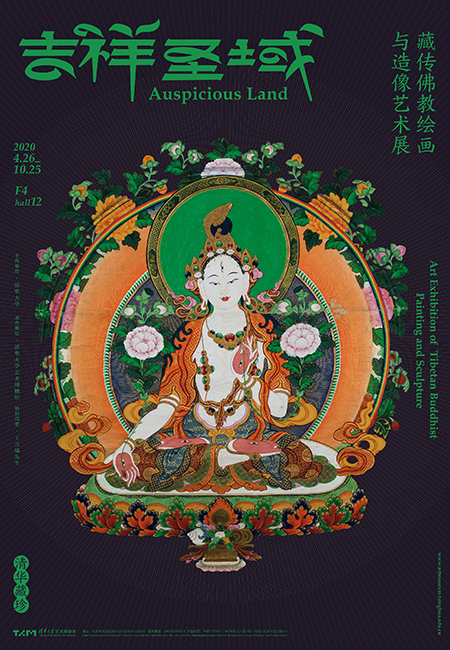Author: Ni Jia, An SuSource: Tsinghua University Art MuseumPublished on: 2020-04-26

In the middle of the seventh century AD, Buddhism was introduced into Tibet from India and the area of Tang Dynasty and integrated with the local Bon religion and culture, thus leading to the formation of Tibetan Buddhist. As the most characteristic in Tibetan Buddhist Art, Thangka is a transliteration of Tibetan, referring to the scroll paintings that were mounted with colorful satin and hung for worship. Thangka is a unique painting art form of Tibetan culture.
As recorded in the Catalogue of Jokhang Temple, “the Chos rje (Srong btsan sgam po) described a dPal ldan lha mo with his own nose blood.” Although it has not been handed down, the Thangka shows the long history of Thangka art. The Buddhist art is grand and profound, and the statues are graceful and mysterious. Thangka art has always followed strict rituals, presenting the solemn and wonderful appearance of Tibetan Buddhism in a standardized form. With exquisite materials, natural colors, complex painting techniques, strict rules, gorgeous mounting and extensive subjects, Thangka art has long been regarded as an “encyclopedia” of religious and secular life in Tibet.
Tsinghua University Art Museum holds a collection of Thangka masterpieces stemming from the 17th to 20th centuries. Among them, the Vajrabhairava reflecting the subjects of Yi dam; the dPal ldan lha mo which is full of pictorial meanings; the Vaishravana in the Na Thang technique; and the Manjushri Nagaraksha from Mr. Shen Congwen’s previous donations are most representative splendid examples. The exhibition interprets the exhibits from the perspective of classical sculptures, hoping that the audience will be able to grasp the processe and rituals of Thangka painting and appreciate the beauty of Thangka art through this exhibition.